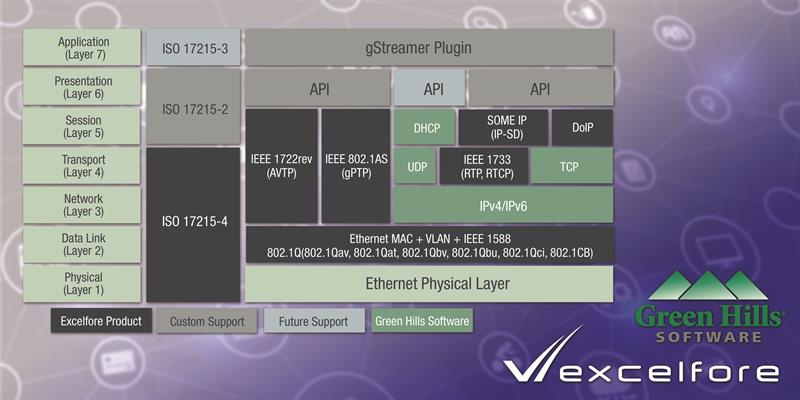The agreement sees Excelfore's portfolio integrated and optimised with Green Hills' INTEGRITY real-time operating system (RTOS) and its embedded high performance TCP/IP v4/v6 networking stack.
Combined these solutions provide the foundational security, safety, performance and protocol support required in the next generation of vehicle gateway electronics systems.
The Excelfore protocol stacks include support for:
- Ethernet AVB/TSN Talker/Listener
- DoIP
- SOME/IP
- RTP/RTCP (including IEEE 1733)
- gPTP Slave/Bridging
According to Excelfore, its stacks bring time-sensitive networking to Ethernet and provide a robust solution set for TCP/IP (Internet Protocols) to reach edge devices throughout the connected vehicle.
Commenting Dan Mender, Vice President, Business Development at Green Hills Software, said, “Robust networking is a fundamental requirement for next-generation vehicle gateway designs, enabling the advanced features of the connected car. The combination of our INTEGRITY RTOS integrated with Excelfore network protocol stacks deliver the safe, secure, high performance user experience that is essential in today’s advanced network-enabled vehicles and has been successfully deployed in numerous automotive OEMs’ platforms to-date.”

Shrikant Acharya, CTO at Excelfore, added, “Millions of vehicles now contain software created with Green Hills Platforms for Automotive. It is valued by customers for delivering failsafe, stable, high-performant secure solutions. The Excelfore protocol stacks align very well with those qualities and help Green Hills Software deliver reliable, high throughput networking that is essential for enabling a best-in-class connected car application experience.”
Across the automotive industry, Excelfore’s eAVB/TSN is running in automotive OEMs’ cameras, video displays, head units and ECUs and enabling in-vehicle network gateways to provide access to CAN, LIN and other buses via the in-vehicle Ethernet TCP/IP interface.













